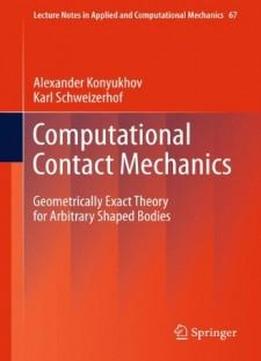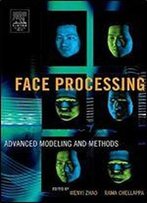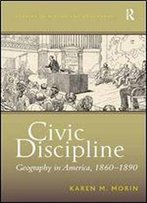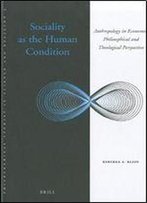
Computational Contact Mechanics: Geometrically Exact Theory For Arbitrary Shaped Bodies (lecture Notes In Applied And Computational Mechanics)
by Alexander Konyukhov /
2012 / English / PDF
15.9 MB Download
This book contains a systematical analysis of geometrical
situations leading to contact pairs --
point-to-surface, surface-to-surface, point-to-curve,
curve-to-curve and curve-to-surface. Each contact pair
is inherited with a special coordinate system based on its
geometrical properties such as a Gaussian surface coordinate
system or a Serret-Frenet curve coordinate system. The
formulation in a covariant form allows in a straightforward
fashion to consider various constitutive relations for a
certain pair such as anisotropy for both frictional and
structural parts. Then standard methods well known in
computational contact mechanics such as penalty, Lagrange
multiplier methods, combination of both and others are
formulated in these coordinate systems. Such formulations require
then the powerful apparatus of differential geometry of surfaces
and curves as well as of convex analysis. The final goals of such
transformations are then ready-for-implementation numerical
algorithms within the finite element method including any
arbitrary discretization techniques such as high order and
isogeometric finite elements, which are most convenient for the
considered geometrical situation.
This book contains a systematical analysis of geometrical
situations leading to contact pairs --
point-to-surface, surface-to-surface, point-to-curve,
curve-to-curve and curve-to-surface. Each contact pair
is inherited with a special coordinate system based on its
geometrical properties such as a Gaussian surface coordinate
system or a Serret-Frenet curve coordinate system. The
formulation in a covariant form allows in a straightforward
fashion to consider various constitutive relations for a
certain pair such as anisotropy for both frictional and
structural parts. Then standard methods well known in
computational contact mechanics such as penalty, Lagrange
multiplier methods, combination of both and others are
formulated in these coordinate systems. Such formulations require
then the powerful apparatus of differential geometry of surfaces
and curves as well as of convex analysis. The final goals of such
transformations are then ready-for-implementation numerical
algorithms within the finite element method including any
arbitrary discretization techniques such as high order and
isogeometric finite elements, which are most convenient for the
considered geometrical situation.
The book proposes a consistent study of geometry and kinematics,
variational formulations, constitutive relations for surfaces and
discretization techniques for all considered geometrical pairs
and contains the associated numerical analysis as
well as some new analytical results in contact mechanics.
The book proposes a consistent study of geometry and kinematics,
variational formulations, constitutive relations for surfaces and
discretization techniques for all considered geometrical pairs
and contains the associated numerical analysis as
well as some new analytical results in contact mechanics.











